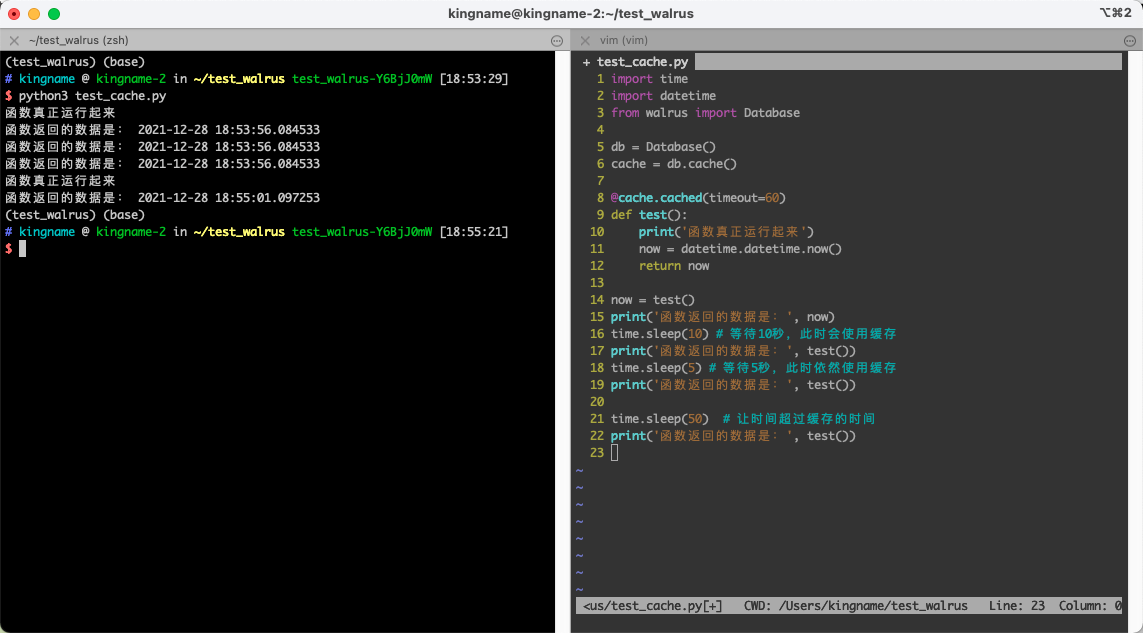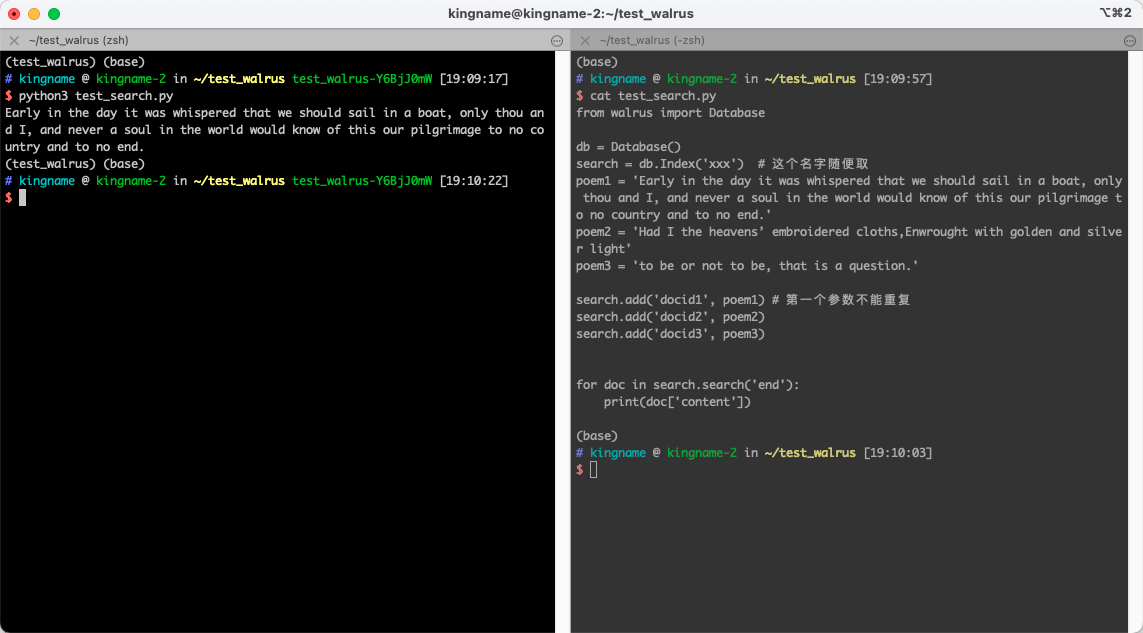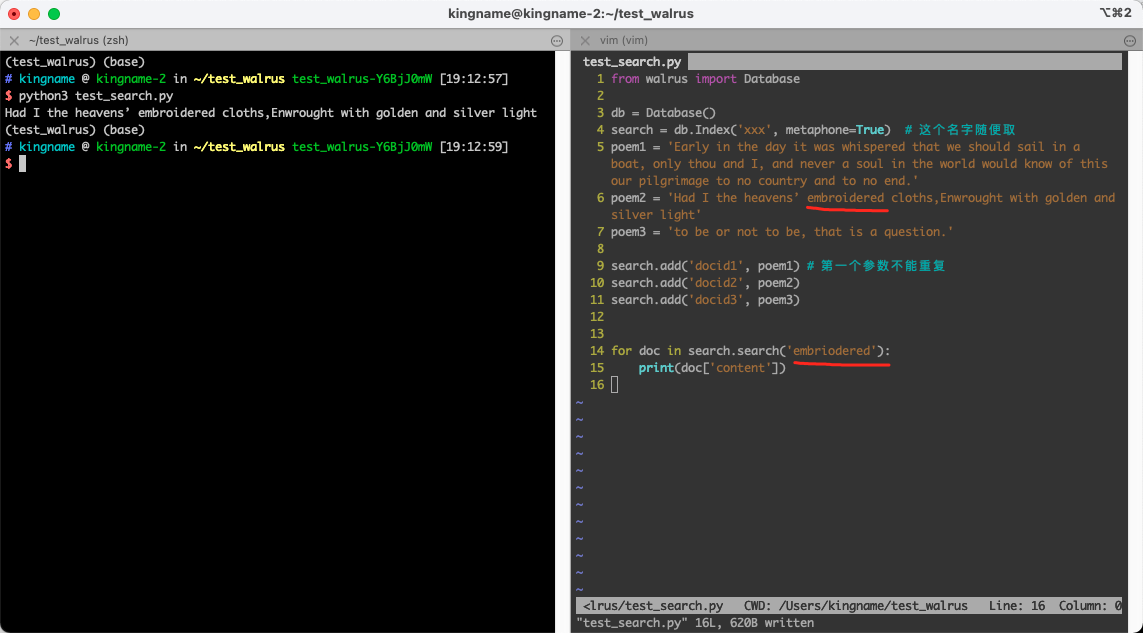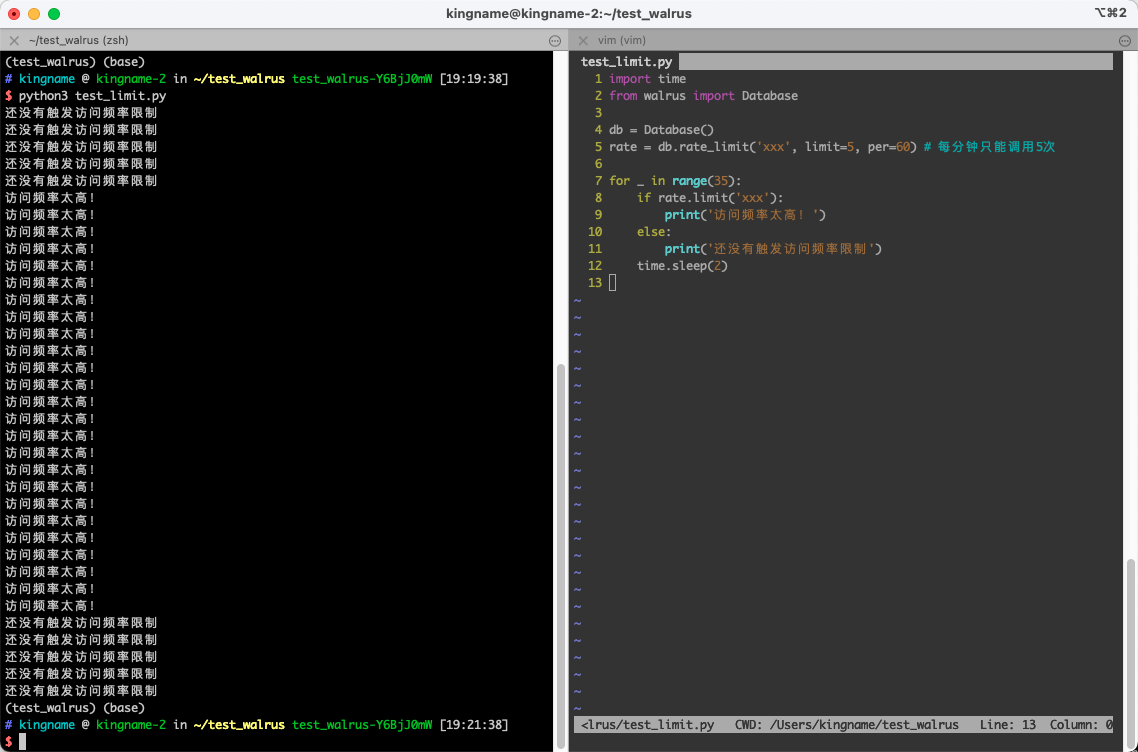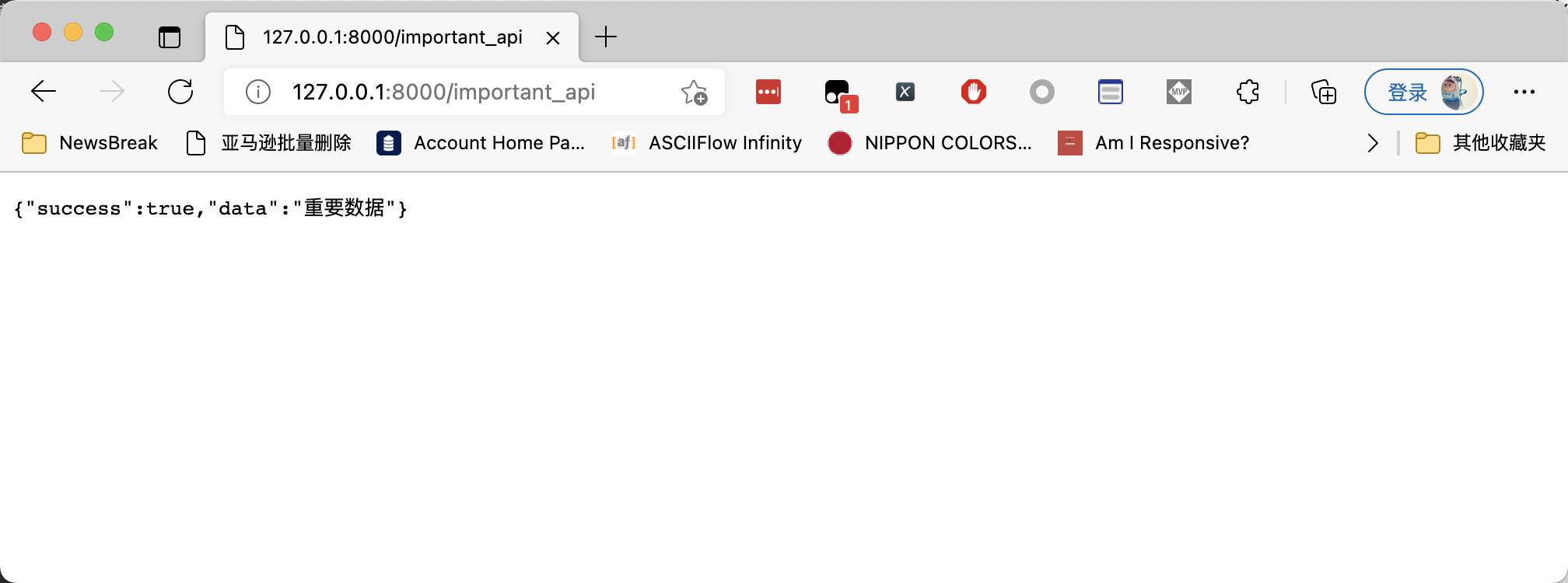在以前的文章里面,我给大家介绍了使用Python自带的LRU缓存实现带有过期时间的缓存:一日一技:实现有过期时间的LRU缓存 。也讲过倒排索引:使用倒排索引极速提高字符串搜索效率 。但这些代码对初学者来说比较难,写起来可能会出错。
实际上,这些功能其实都可以使用Redis来实现,而且每个功能只需要1分钟就能做出来。全文搜索功能在搜索英文的时候,甚至可以智能识别拼写错误的问题。
要实现这些功能,只需要做两件事:
安装Redis
Python安装第三方库:walrus
安装完成以后,我们来看看它有多简单:
带过期时间的缓存装饰器 我们想实现一个装饰器,它装饰一个函数。让我在1分钟内多次访问函数的时候,使用缓存的数据;超过1分钟以后才重新执行函数的内部代码:
1 2 3 4 5 6 7 8 9 10 11 12 13 14 15 16 17 18 19 20 21 22 import timeimport datetimefrom walrus import Databasedb = Database() cache = db.cache() @cache.cached(timeout=60 ) def test (): print ('函数真正运行起来' ) now = datetime.datetime.now() return now now = test() print ('函数返回的数据是:' , now)time.sleep(10 ) print ('函数返回的数据是:' , test())time.sleep(5 ) print ('函数返回的数据是:' , test())time.sleep(50 ) print ('函数返回的数据是:' , test())
运行效果如下图所示:
全文搜索 我们再来看看全文搜索功能,实现起来也很简单:
1 2 3 4 5 6 7 8 9 10 11 12 13 14 15 from walrus import Databasedb = Database() search = db.Index('xxx' ) poem1 = 'Early in the day it was whispered that we should sail in a boat, only thou and I, and never a soul in the world would know of this our pilgrimage to no country and to no end.' poem2 = 'Had I the heavens’ embroidered cloths,Enwrought with golden and silver light' poem3 = 'to be or not to be, that is a question.' search.add('docid1' , poem1) search.add('docid2' , poem2) search.add('docid3' , poem3) for doc in search.search('end' ): print (doc['content' ])
运行效果如下图所示:
如果你想让他兼容拼写错误,那么可以把search = db.Index('xxx')改成search = db.Index('xxx’, metaphone=True),运行效果如下图所示:
不过遗憾的是,这个全文搜索功能只支持英文。
频率限制 我们有时候要限制调用某个函数的频率,或者网站的某个接口要限制IP的访问频率。这个时候,使用walrus也可以轻松实现:
1 2 3 4 5 6 7 8 9 10 11 12 import timefrom walrus import Databasedb = Database() rate = db.rate_limit('xxx' , limit=5 , per=60 ) for _ in range (35 ): if rate.limit('xxx' ): print ('访问频率太高!' ) else : print ('还没有触发访问频率限制' ) time.sleep(2 )
运行效果如下图所示:
其中参数limit表示能出现多少次,per表示在多长时间内。
rate.limit只要传入相同的参数,那么就会开始检查这个参数在设定的时间内出现的频率。
你可能觉得这个例子并不能说明什么问题,那么我们跟FastAPI结合一下,用来限制IP访问接口的频率。编写如下代码:
1 2 3 4 5 6 7 8 9 10 11 12 13 14 15 16 17 18 19 20 21 22 23 24 25 from walrus import Database, RateLimitExceptionfrom fastapi import FastAPI, Requestfrom fastapi.responses import JSONResponsedb = Database() rate = db.rate_limit('xxx' , limit=5 , per=60 ) app = FastAPI() @app.exception_handler(RateLimitException ) def parse_rate_litmit_exception (request: Request, exc: RateLimitException ): msg = {'success' : False , 'msg' : f'请喝杯茶,休息一下,你的ip: {request.client.host} 访问太快了!' } return JSONResponse(status_code=429 , content=msg) @app.get('/' def index (): return {'success' : True } @app.get('/important_api' @rate.rate_limited(lambda request: request.client.host def query_important_data (request: Request ): data = '重要数据' return {'success' : True , 'data' : data}
上面代码定义了一个全局的异常拦截器:
1 2 3 4 @app.exception_handler(RateLimitException ) def parse_rate_litmit_exception (request: Request, exc: RateLimitException ): msg = {'success' : False , 'msg' : f'请喝杯茶,休息一下,你的ip: {request.client.host} 访问太快了!' } return JSONResponse(status_code=429 , content=msg)
在整个代码的任何地方抛出了RateLimitException异常,就会进入这里的逻辑中。
使用装饰器@rate.rate_limited装饰一个路由函数,并且这个装饰器要更靠近函数。路由函数接收什么参数,它就接收什么参数。在上面的例子中,我们只接收了request参数,用于获取访问者的IP。发现这个IP的访问频率超过了限制,就抛出一个RateLimitException。于是前面定义好的全局拦截器就会拦截RateLimitException异常,拦截到以后返回我们定义好的报错信息。
在频率范围内访问页面,返回正常的JSON数据:
频率超过设定的值以后,访问页面就会报错,如下图所示:
总结 walrus对redis-py进行了很好的二次封装,用起来非常顺手。除了上面我提到的三个功能外,它还可以实现几行代码生成布隆过滤器,实现自动补全功能,实现简易图数据库等等。大家可以访问它的官方文档了解详细使用说明 。
